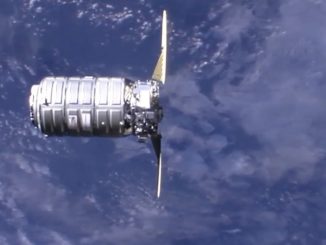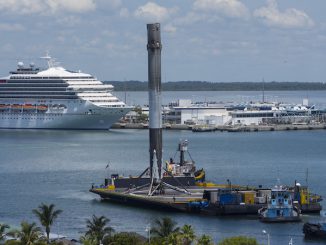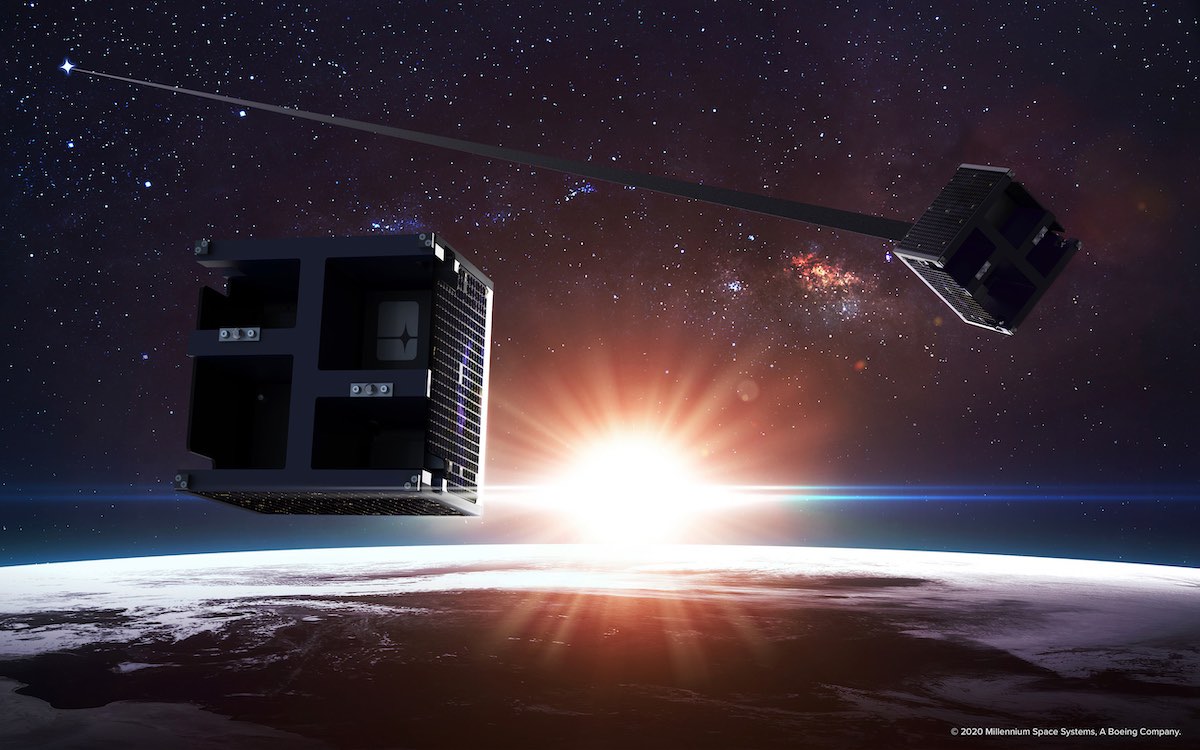
Millennium Space Systems, a Boeing subsidiary, built two small satellites awaiting launch Thursday night on a Rocket Lab Electron rocket on a mission to test the effectiveness of a drag-inducing device that could help remove spacecraft from orbit.
The two small satellites are part of the DragRacer mission, which is set to launch with a cluster of payloads on a Rocket Lab Electron vehicle during a window opening at 8:46 p.m. EST Thursday (0146 GMT) and closing at 11:34 p.m. EST (0434 GMT).
The window opens at 2:46 p.m. local time Friday at Rocket Lab’s launch site, located on the North Island of New Zealand.
For the first time, Rocket Lab will attempt to recover the first stage of the Electron rocket with a parachute. A successful recovery would push the California-based launch company closer to reusing rocket boosters.
The DragRacer experiment includes two satellites — built by Millennium Space Systems — that will separate shortly after launching on the Electron rocket in a 310-mile-high (500-kilometer) sun-synchronous orbit. One satellite — named Alchemy — will extend a 230-foot-long (70-meter) electrically conductive tether, a device designed to increase the surface area of the spacecraft, allowing it to succumb to aerodynamic drag and naturally re-enter the atmosphere and burn up.
Both DragRacer spacecraft are identical, except that one carries the tether and the other — named Augury — does not.
According to preflight predictions, the satellite with the tether could re-enter the atmosphere within 45 days. The spacecraft without the tether — the control for the experiment — is expected to remain in orbit for around seven years, according to mission team members.
The device affixed to DragRacer’s Alchemy satellite is called a Terminator Tape. Developed by Tethers Unlimited, the tape measures just a few inches wide, but it can spool out to lengths of hundreds of feet.
The DragRacer experiment is a purely commercial experiment to quantify the effectiveness of the Terminator Tape technology, which Millennium and Tethers Unlimited say is a more reliable, lower cost, and less complex alternative to other deorbit methods, such as drag sails or propulsive thrusters.
“This scientific method experiment will demonstrate Millennium’s ability to field and fly a low-cost and straightforward orbital debris mitigation solution that doesn’t require added mass, volume, cost and complexity of propulsion system to deorbit a satellite in low Earth orbit,” said Stan Dubyn, founder and CEO of Millennium Space Systems, in a press release.
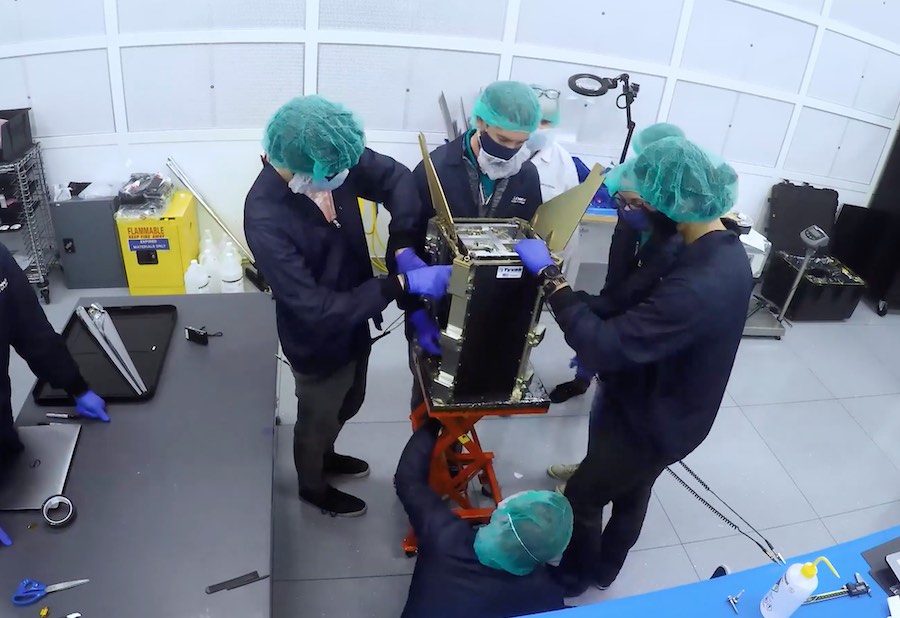
The two DragRacer satellites have a combined weight of around 55 pounds, or 25 kilograms, according to TriSept Corp., a partner on the DragRacer mission overseeing the integration of the satellites on the Rocket Lab launcher.
Ground-based radars will track the changing orbits of both DragRacer spacecraft to measure how they decay differently.
“The space community understands tether systems can expedite re-entry, but this is our first opportunity to truly quantify performance directly and more effectively calibrate models developed over the last 50 years,” said Robert Hoyt, founder and CEO of Tethers Unlimited. “Predictions suggest the tethered spacecraft will deorbit in approximately 45 days, while the untethered spacecraft remains in orbit for approximately 7 to 9 years.”
Tethers Unlimited’s Terminator Tape technology has flown before. The company says the tether module — which attaches on the exterior of a host spacecraft — weighs about 2 pounds and is about the size of a notebook, and is suitable for a range of satellite sizes.
The Prox-1 microsatellite developed by students at Georgia Tech deployed 230-foot-long Terminator Tape last year. Tethers Unlimited said tracking of the spacecraft showed its orbit decaying 24 times faster after extending the tether.
Flying two identical satellites on the DragRacer mission will allow engineers to better characterize the performance of the tether technology.
“The mission is completely about the demonstration,” said Jason Armstrong, director of TriSept’s launch and integration services, in an interview last year with Spaceflight Now. “So immediately upon separation from the launch vehicle, the two halves of the spacecraft will come apart from each other, and then we can deploy the tether on one half of the spacecraft and get immediate results.”
Armstrong said the benefit of the Terminator Tape over other deorbit solutions is its smaller volume and mass.
“It’s much less complex as far as the capabilities you need to have for actuating and deploying the system,” Armstrong said. “On-board, all we need to have is a small timer with a little battery mechanism. That’s very attractive (to satellite operators) because you’re not introducing risk or any high complexity systems that have to talk to your flight computer.”
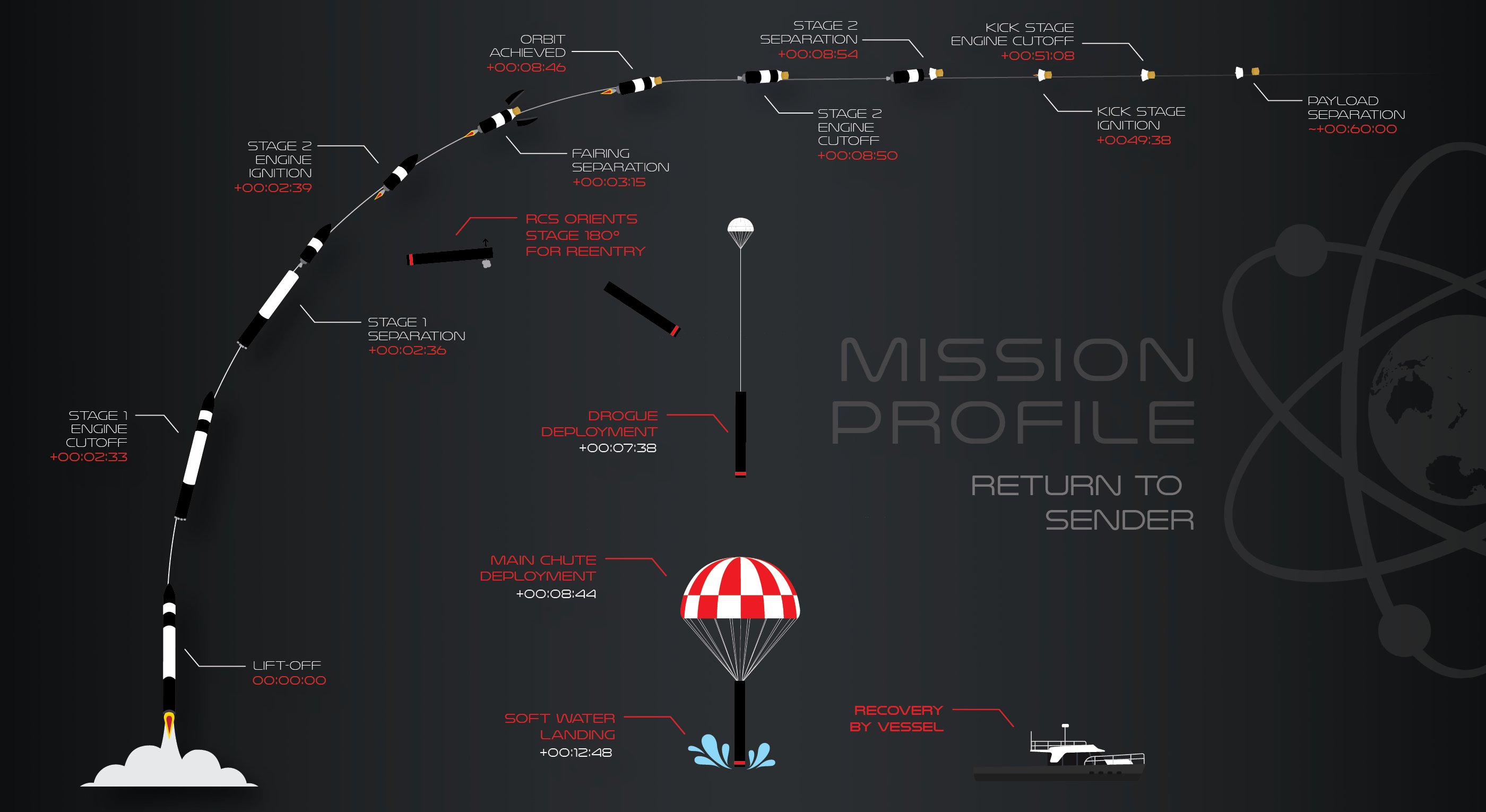
Other payloads set for launch on Rocket Lab’s mission Thursday night include two briefcase-sized CubeSats for a French startup named UnseenLabs. Built by the Danish smallsat manufacturer GomSpace, the Bro-2 and Bro-3 satellites are the second and third launched for UnseenLabs.
The French company plans to field a constellation of 20 to 25 satellites over the next five years for maritime surveillance. UnseenLabs says its fleet of nanosatellites will be able to locate and identify ships around the world, providing tracking services for maritime operators and helping security forces watch for pirates and smugglers.
Swarm Technologies has 24 of its tiny SpaceBEE satellites, each about the size of a slice of bread, ready for liftoff on the Electron rocket rocket. The “BEE” in SpaceBEE stands for Basic Electronic Element.
Swarm is developing a low-data-rate satellite communications fleet the company says could be used by connected cars, remote environmental sensors, industrial farming operations, transportation, smart meters, and for text messaging in rural areas outside the range of terrestrial networks.
New Zealand’s first satellite designed and built by university satellites is also set to ride into orbit on the Electron rocket.
Designed and built at the University of Auckland, the CubeSat is named Te Waka Āmiorangi o Aotearoa, which translates in English to New Zealand Satellite Vessel. It’s also known as APSS-1, using the acronym for the Auckland Program for Space Systems.
The spacecraft carries an instrument to measure electrical disturbances in the ionosphere to investigate how they might be linked to earthquakes.
Rocket Lab is flying the APSS 1 satellite at no charge, according to the University of Auckland.
“Less than four years ago we didn’t have domestic space launch capability and now, we’re launching New Zealand’s first student-built satellite from kiwi soil,” said Peter Beck, Rocket Lab’s founder and CEO. “It marks the beginning of a whole new era of space research, development, and opportunity for local students.”
There’s also a more whimsical payload riding on the Electron rocket, but it has a tangible purpose.
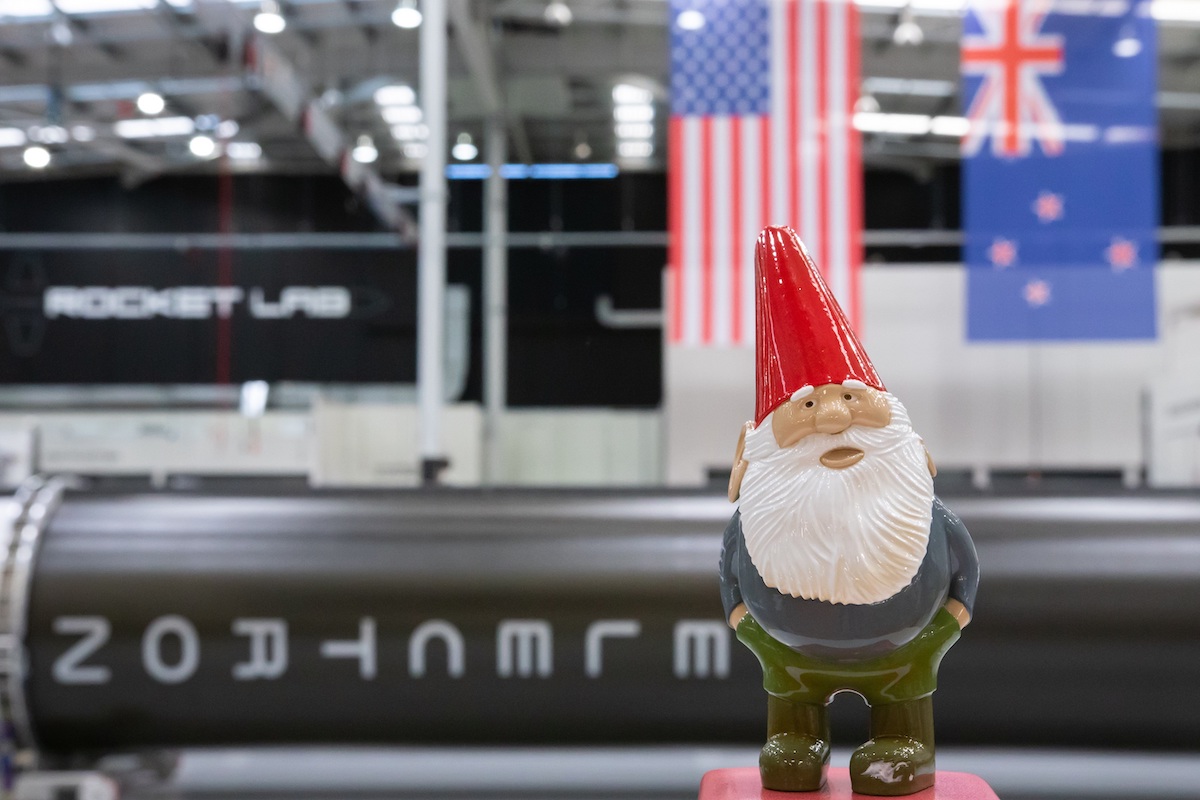
A “mass simulator” in the form of Gnome Chompski, an item from the “Half-Life” video game, will remain attacked to the Electron rocket’s kick stage after it releases the mission’s other payloads. The space-bound gnome was created for Gabe Newell, founder of the video game company Valve.
“Manufactured with support from multi-award-winning design studio Weta Workshop, the unique space component is additively manufactured from titanium and printed in the shape of Half-Life gaming icon Gnome Chompski,” Rocket Lab writes in the press kit for Thursday’s mission. “The mission serves as an homage to the innovation and creativity of gamers worldwide, and also aims to test and qualify a novel 3D printing technique that could be employed for future spacecraft components. The 150 mm gnome will remain attached to Electron’s kick stage and will de-orbit with it when the stage burns up on re-entry to the Earth’s atmosphere.
Newell will donate one dollar to the pediatric intensive care unit at Starship Children’s Hospital in Auckland for every person who watches Rocket Lab’s launch webcast, which will be streamed on Spaceflight Now.
Email the author.
Follow Stephen Clark on Twitter: @StephenClark1.

